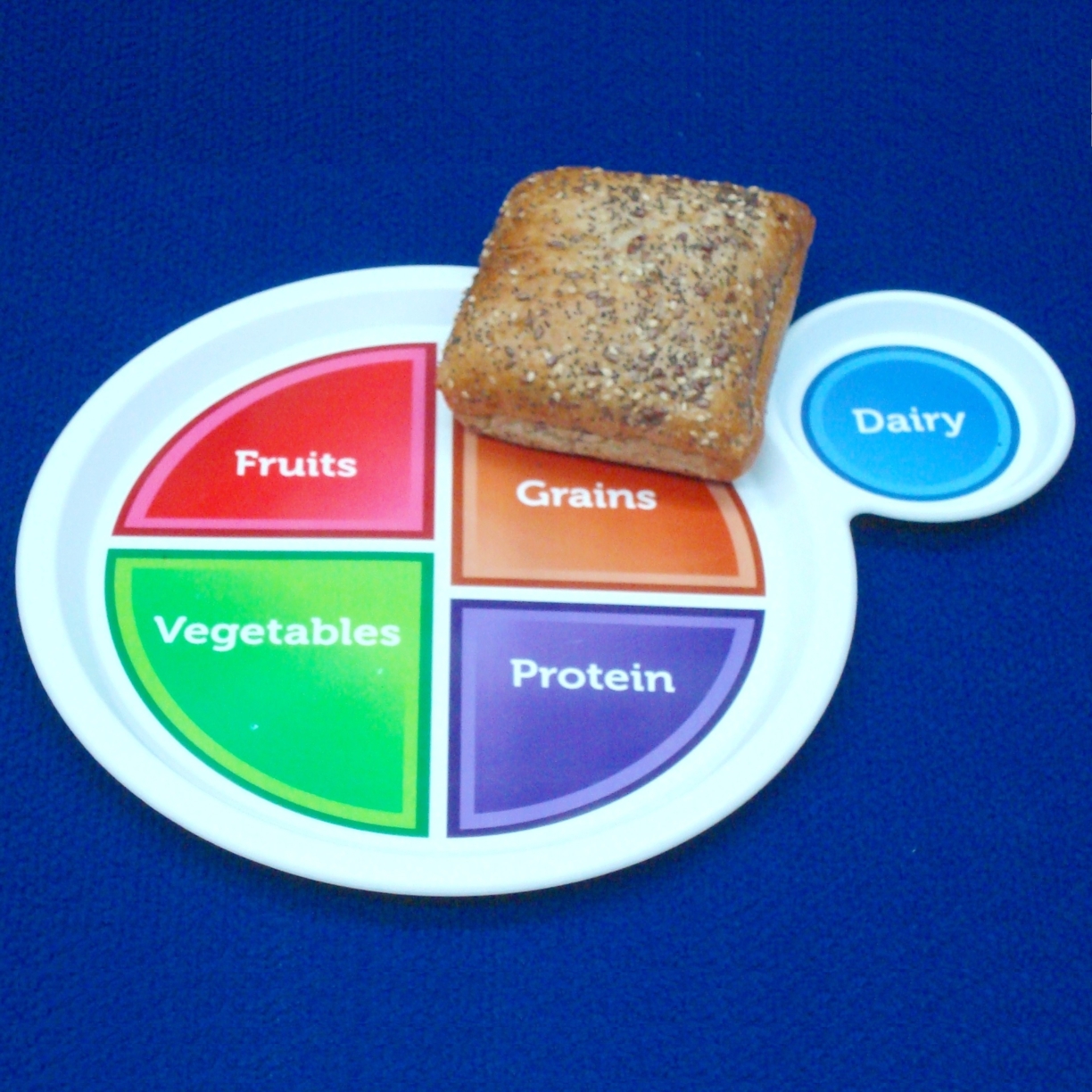
by Angela Hinkle | May 1, 2015
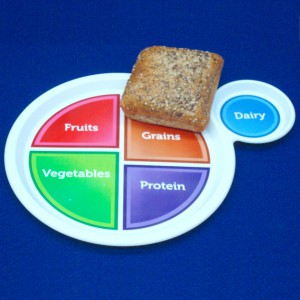
MyPlate “Roll Model”
Set a good example for your family and friends by eating whole grains in meals and snacks. Whole grain rolls, tortillas, hot and cold cereals, breads, pastas, crackers, and brown rice are excellent foods that boast health benefits and add a variety of tastes and textures into your diet.
What is a whole grain?
There are two categories of grains, Whole Grains and Refined Grains. Whole grains include all the parts of the grain kernel – the bran, germ, and endosperm. These different parts add numerous vitamins, minerals, and fiber. Whole-wheat flour, brown rice, and oatmeal are examples of whole grains. Refined grains have been processed to remove the bran and germ, which removes vitamins, minerals, and fiber. White flour and white rice are examples. Most refined grains are enriched so some of the vitamins are added back in after processing.
How do you know if it is a whole grain?
Just because it is brown does not make it whole. Look for the word “whole” to be listed first in the ingredients. Also, look for 100% whole grain. (100% wheat on the front label is usually not the same as 100% whole wheat.) Look for brown rice instead of white.
Why should half your grains be whole grains?
People who eat whole grains as part of a healthy diet have reduced risk of some chronic diseases like heart disease, diabetes, and certain cancers. Consuming fiber-rich whole grains may reduce constipation. Also, eating whole grain foods every day may help with management of weight.
How can your family eat more whole grains?
Try swapping a whole grain like whole-wheat tortillas for refined-flour tortillas. For a little something different, give brown rice or whole-wheat pasta a try or even a whole grain pizza crust. Add whole grains like brown rice or barley to vegetable soups and add bulgur or whole-wheat pasta to casseroles. Whole grain crackers, unsweetened whole grain cereal, or rolled oats add a nice coating to baked meats and vegetables. Whole-wheat bread or cracker crumbs are great in a meatloaf. Make a whole grain cereal snack mix by combining three or four different whole grain cereals. Snack on popcorn – it’s a whole grain (just remember to limit the addition of salt and butter.)
For more information and ways to eat healthy from all the food groups, check out http://www.choosemyplate.gov/food-groups/index.html or contact your local UF/IFAS Extension Office http://directory.ifas.ufl.edu/Dir/searchdir?pageID=3&pl=05
When you eat the “model” whole grain roll (and other whole grain foods), you’re being a good “roll” model for those around you. Try a variety of whole grain foods starting today.
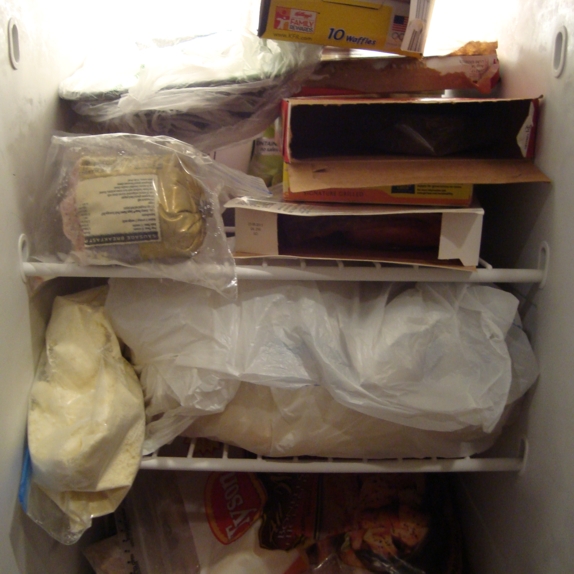
by Angela Hinkle | Mar 13, 2015
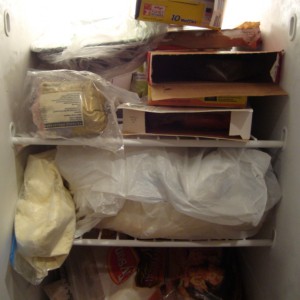
UFOs in Your Freezer
Does your kitchen freezer resemble an archaeological dig in an iceberg? Do you ever see what you think is what you’re looking for in the very back? As you reach for it, half of everything else falls out onto your kitchen floor? UFOs (Unidentified Frozen Objects) end up everywhere. Your reaction may be something like, “*#@&!”
This may be a sign that it’s time to organize your freezer. “Are you kidding me? Who has time for that?,”’ you may ask. You might even roll your eyes.
Here are a few tips that may help:
- Clean it out and when in doubt, throw it out.
Start with the hardest part first – trust me, it gets much easier after you’ve completed this step. Go through all the contents of your freezer and throw out what is freezer-burned or otherwise unusable. If you really have no idea if it’s animal, mineral, or vegetable, or how long it’s been in your freezer, it’s time to toss.
If you’ll take a quick moment to label and date the food before you put it in the freezer, you’ll save your sanity later by avoiding guess work. (A friend told me she pulled the plastic tub of fundraiser cookie dough out of the freezer as a treat for her kids. What a surprise to be treated instead to vegetable stew.) Label using wax crayons, pencil, or marker pens on stickers or tape that can stay put in freezing temperatures. And yes, if you are so inclined, there are apps for labeling. By the way, the sniff test is usually useless, since most frozen foods won’t have much of an aroma.
- Freeze in useable portions.
Congratulations! You saved money buying the chicken in that family-sized pack. Keep food safe and manageable by individually wrapping pieces, then freezing in a large, labeled, plastic zip-type bag. Then you only take out the amount you want. You may lose more money than the original savings if you have to thaw out and possibly throw out a gigantic clump of chicken because you only wanted enough for two. Smaller packages also freeze and thaw faster, which saves you time.
Pancakes, berries, broths, meats, nuts, chilies and stews, flour, shrimp, and fish are good choices for freezing. These foods are structurally sound enough to survive the freezer. On the other hand, you’ll want to avoid freezing high-moisture fruits and vegetables like lettuce and watermelon, yogurt, and fried foods. Their textures and appearance tend to turn to, well, yuck.
- Choose the best containers.
We need air to breath, not to circulate around our frozen foods. Air circulating around frozen food can lead to freezer burn – which often makes the food dry and tough. Find containers close to the size of the food you want to freeze. Also, freezing food flat in plastic zipper bags makes them easy to stack.
Remembering to use these tips should help de-stress your life … at least a little. So the next time you’re asked, “What’s for dinner?,” your reply won’t have to be, “We’re having the UFO that fell on my foot.”
For more information on freezing foods, contact your local UF/IFAS Extension Office at http://directory.ifas.ufl.edu/Dir/searchdir?pageID=3&pl=05 and check out these UF/IFAS publications on freezing fruits, http://edis.ifas.ufl.edu/pdffiles/FY/FY72000.pdf, and freezing vegetables, http://edis.ifas.ufl.edu/pdffiles/FY/FY71900.pdf
by Angela Hinkle | Nov 21, 2014
 Gratitude doesn’t have to happen only on World Gratitude Day or around the Thanksgiving table. Happiness researchers have found that expressing gratitude has wide-ranging benefits. Counting your blessings on a frequent basis is associated with increased happiness. Grateful people are more likely to:
Gratitude doesn’t have to happen only on World Gratitude Day or around the Thanksgiving table. Happiness researchers have found that expressing gratitude has wide-ranging benefits. Counting your blessings on a frequent basis is associated with increased happiness. Grateful people are more likely to:
- take better care of themselves both mentally and physically
- get more regular exercise
- eat a healthier diet
- have improved mental alertness
- schedule regular physical examinations with their doctor
- cope better with stress and everyday challenges
- feel happier and more optimistic
- report more hours and better quality of sleep
- experience fewer physical symptoms like headaches, coughing, nausea, or pain
- have stronger immune systems
- maintain a brighter view of the future
So how do you put more thanks-giving and gratitude into your day? Try these suggestions to give yourself a boost:
- Be mindful of what you have. It’s not how much you have, but how you feel about what you have, that makes the difference.
- Write it down or share with a group that you meet with on a routine basis. This is a great way to continually give thanks.
- If someone thanks you, accept the thanks graciously. Let the person know you appreciate being thanked. You don’t need to do anything else. Honestly.
- Look for small things to be thankful for. The only person they have to be meaningful to is you. Here are some examples: “I found a parking space right away”; “It’s raining and I remembered my umbrella today”; “I was in a hurry and someone let me go in front of them in the line at the store”; “I had a good hair day.”
- If you write a thank you note, keep it short and simple. It’s not a big report that’s due or the novel you keep putting off writing. Just think of the reason for the thank you and be sincere. If you forgot to send a thank you note, don’t let the elapsed time be an excuse to avoid the task all together. You can send a quick email and then get to the real thing.
During the holiday season and throughout the year, enjoy and be thankful for the little and the big things and the kindnesses of others. Gratitude is good for your head, good for your heart, and good for your soul. And, just so you know, we take you very seriously – thanks for taking the time to read this message.
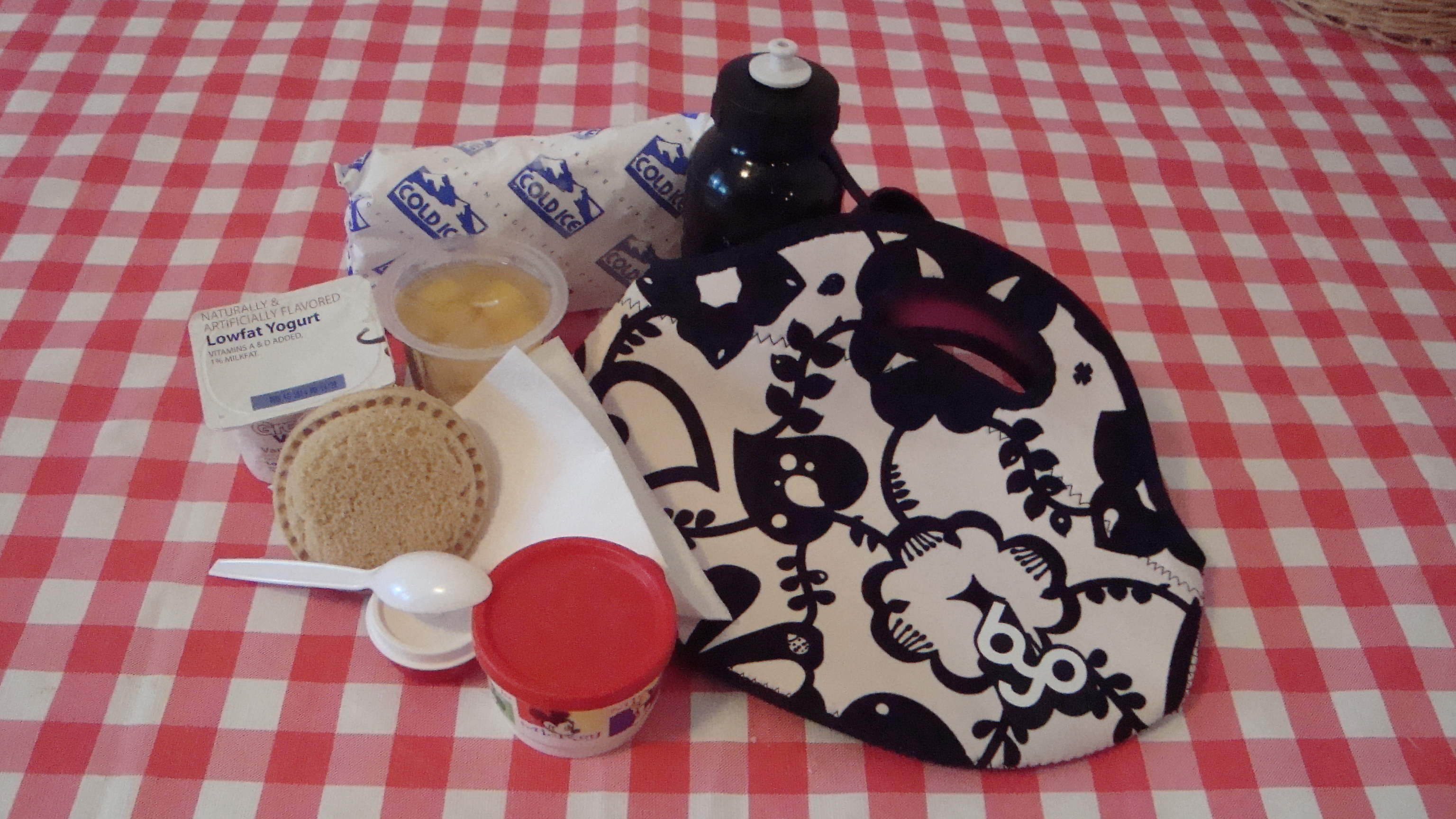
by Angela Hinkle | Sep 6, 2014
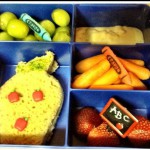
Use colorful foods and interesting shapes to make lunches fun!
Photo credit: Jen Bradshaw
Lunch, that is. Yes, it’s back to school time. Whether the words “back to school” make you happy or sad, it is that time of year. One thing we can agree on, though, is that a healthy, safe, attractive lunch our kids will actually eat makes everyone happy. Here are a few things to keep in mind if you’re packing school lunches this year.
Healthy – Be sure to use foods from all five food groups:
- Fruits and Vegetables – Just like MyPlate, try to fill up half the lunchbox with fruits and veggies. Buy in season to be more economical. Use fresh, frozen, canned, dried, and juiced. All forms count. A variety of fruits and vegetables looks more appealing and adds loads of nutrients.
- Grains – a variety of breads, tortillas, pitas, crackers, popcorn, rice, etc. – try to make at least half your grains whole to get the healthiest benefits.
- Lean proteins – turkey breast, tuna in water, peanut butter, and bean dip are all healthy choices.
- Low- or no-fat dairy – provide everything they need to make a parfait – low- or no-fat yogurt with a couple of drops of vanilla, fruit, and low-fat granola. A thermos of milk or a string cheese stick works great.
Safe – Keep cold foods like lunch meat and yogurt cold by adding freezer gel packs to the lunch box. Keep hot food, like soup, hot by using an insulated container in an insulated lunch box. For more information on safely packing food to be eaten later, check out http://healthymeals.nal.usda.gov/resource-library/food-safety/packing-food-safely
Attractive and Fun – Create a theme in the lunchbox. Try: a rainbow of colors, a favorite sport, the circus, shapes, animals, things that are crunchy, or all the foods from a certain country. Cut sandwiches into shapes using cookie cutters. Since we eat with our eyes, use fun containers of different colors and shapes to hold food. Put in chopsticks, straws, and napkins with fun designs for something different. Get the kids to help you. They’re a pretty creative bunch if you give them the chance. And most kids who help make their own meal are proven to be better eaters. And whenever you can, include special notes to let them know you care.
Are you getting ready to start packing lunches? Make them healthy, safe, and fun. You and the kids will both be so glad you did. For additional information on packing lunches, contact your local Extension Office.
by Angela Hinkle | Jul 1, 2014
A picnic is a pleasure excursion for all ages, a delightful expedition away from the normal day. Whether at a park, at the beach, right outside under a tree, on the porch, or on the living room floor, picnics are a great way to slow down and enjoy.
Try some of these ideas for a little something different.
- For a night time picnic, make a pizza and some popcorn inside and take them outside for movie night. Use a projector to shine your favorite movie on a white sheet that you’ve hung up on the side of the house or a shed.
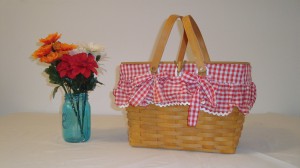
Enjoy a healthy and safe picnic this summer!
- Pack sandwiches cut in your favorite characters and shapes using cookie cutters.
- Make Ka-bobs. Put veggies, fruits, bread cubes, and chilled cheeses and meats on purchased wooden sticks or skewers. Making them is as much fun as eating them.
For food safety:
Keep cold foods cold. Plan to use well insulated coolers with plenty of ice. Don’t let cold foods sit out for more than one hour outside or two hours inside. Leftovers should be put back in coolers right after serving. The longer foods stay at unsafe temperatures, the more bad bacteria can grow and cause a foodborne illness.
Keep hot foods hot. Don’t let hot foods sit out for more than one hour. Plan to eat prepared foods shortly after they are cooked.
When it’s a rainy day or you just want the cool of air conditioning (or even something a bit warmer if its winter), take the picnic inside.
- Bring all the stuffed animals so everyone gets to come to the picnic. The more the merrier.
- Build a fort with blankets and a coffee table or if you have room, put up a tent on the living room floor for your picnic.
- Use chopsticks to eat peanut butter or other “sushi” rolls. To make this, smear peanut butter or low-fat cream cheese on a whole-wheat tortilla, put a banana in the middle, roll it up and sprinkle with cinnamon and raisins. Cut into slices. Ta da – Peanut Butter Sushi.
- For a romantic date night, pack a loaf of crusty bread, some Brie cheese, strawberries, whipped cream, and a bottle of something bubbly. Take cloth napkins and a comfy blanket to sit on.
Inside or outside – have a great picnic season!








